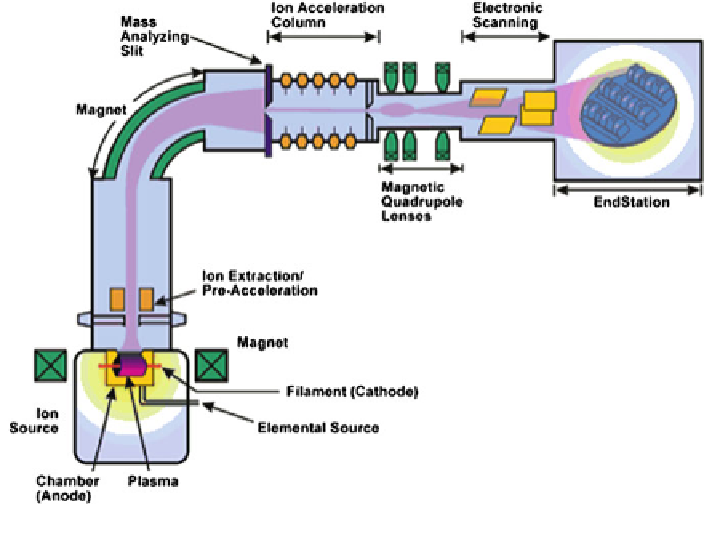Chemistry Reference
In-Depth Information
Fig. 6.2
Conventional ion implanter
measures. The inside of the magnet can be covered with a removable lining, which
catches the possible radioactive products that are not following the path selected
by the magnet setting for the desired isotope. A few laboratories, e.g. at the
universities of Groningen, Bonn and Leuven acquired in the 1960s such dedicated
experimental facilities to implant relatively long-lived radioactive isotopes. In
order to keep the accumulation of radiation in the facility below reasonable limits,
the use of radioactive isotopes is these set-ups is normally limited to isotopes with
half-lives below one year.
6.1.3 KeV Ion Penetration in Matter
Since the binding energy of atoms in solids is of the order of electron volt, it can be
readily expected that ions penetrating in matter with KeV kinetic energy displace
many atoms. The phenomena accompanying ions penetrating in matter have been
studied in great detail and are well understood. Theoretical treatments can be
found in several handbooks [
8
] and computer codes are available [
9
] that accu-
rately calculate the implantation profile of particular ions of well-defined energy in
solids. Such a profile is characterized by a certain average implantation depth and a
certain profile width, called straggling, as shown in Fig.
6.3
.

